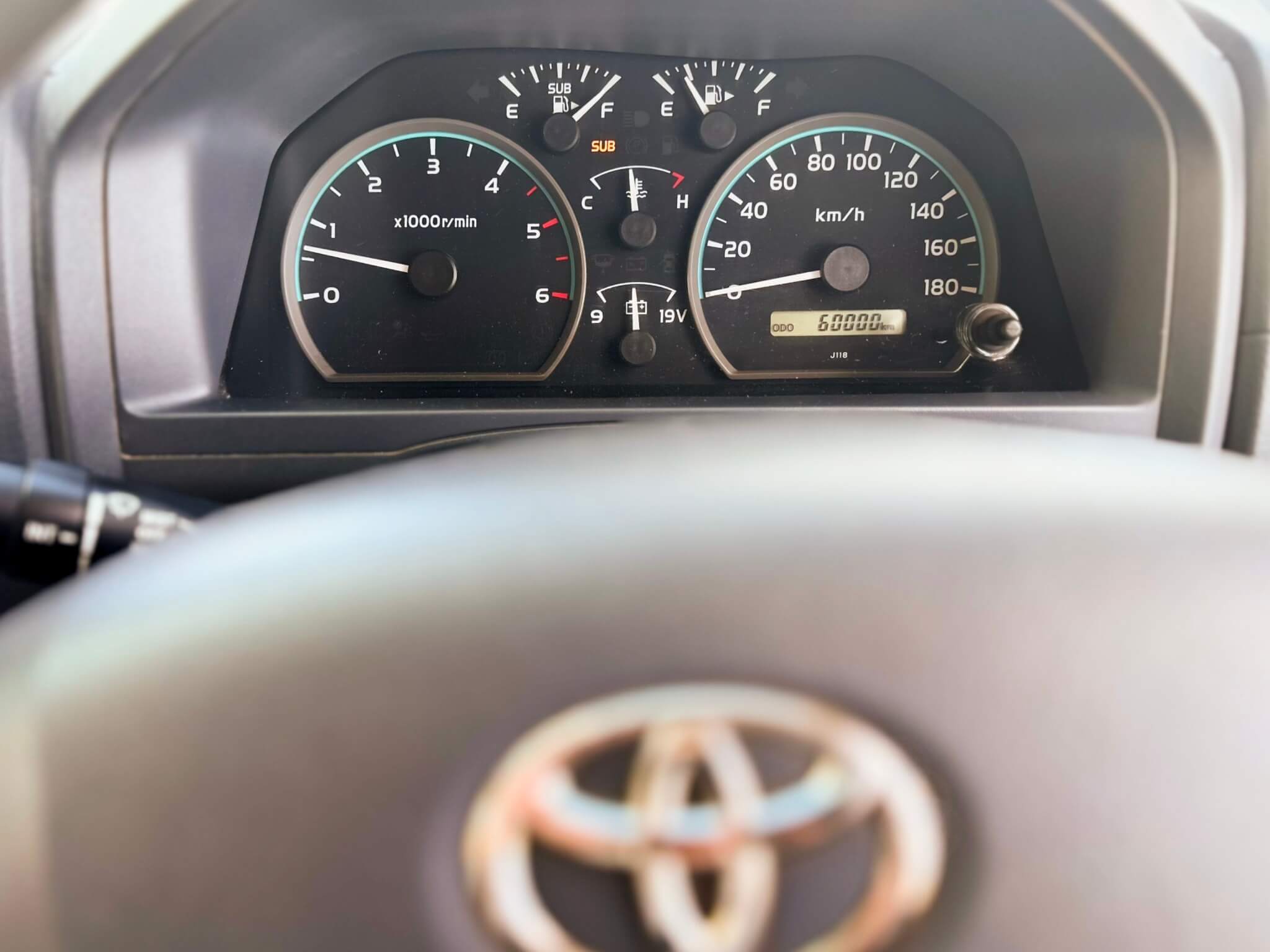After just over 20 months of traveling, we have passed the 60,000 km mark with the Donkey in Botswana, on the way from Maun to Ganzhi. We would like to take this opportunity to evaluate the Donkey and our experiences. What has worked, what has not? How reliable or unreliable has our vehicle been so far? What would we do differently from today’s perspective?
The Toyota Land Cruiser 79 S/C with 4.2 L inline 6-cylinder engine
Number of services: 9
Costs: approx. CHF 2,514
Number of failures/defects: 0
Number of problems/abnormalities: 0
Tire sets: 2
Tire blowouts: 1
Tire damage (repairable): 3
Liters of diesel filled up: 8,334
Average consumption per 100 km: 13.89 liters
Good to have done it and good not to have done it
The decision not to fit the Donkey with a winch was absolutely right. There was not a single situation in which we would have needed the winch. Improvements such as raising the differential ventilation and fitting a one-piece snorkel have proved completely worthwhile. None of our multiple water crossings caused any problems. This work makes a lot of sense if, as a traveler, you can’t and don’t want to rule out water crossings.
It also makes sense to use a wheel spacer for the rear axle. A major disadvantage of the 70-series Land Cruiser is the different track width of the two axles. This is very unpleasant when driving through (deep) sand. The car then floats unsteadily in the sand and the axles do not run in one track. The wheel spacer provides a remedy.
We would particularly like to mention the larger brake discs and special brake pads that we installed on the front axle. Unfortunately, the standard brakes are completely undersized for heavy touring vehicles. We still use the first pads at the front and rear and, according to Toyota, they are still 85-90% good after around 50,000 km. This value is of course very individual and is certainly due to the fact that we mainly drive long distances with little braking. We also drive very slowly off-road, which is also easy on the brakes.
All the add-on parts that we have installed in the interior have also proved their worth. Not one part has broken. The vehicle is extremely robust and meets the high requirements without any problems.
That was unnecessary
We could have done without the ARB bullbar. It looks good and fits the car, but it’s not necessary. So far – including our first trip in 2018/19 – we haven’t needed it once. The extra weight can easily be saved. In our case, we could just as easily do without the additional headlights. We never drive in the dark and have never used the headlights either.
Do we regret the decision to choose a Land Cruiser as our base vehicle?
Absolutely not! We would choose the car again at any time.

The custom-made cabin
The cabin, which was built according to our plans and specifications, has proved its worth.
The decision not to have the cab integrated (open, with a passage to the driver’s cab) was one of the best decisions. This meant that the heavy components could be housed between the axles with a low center of gravity. The alcove is empty and only offers space for your feet at night. We would build the cabin exactly the same way again, with one small addition: Guido’s wish for a photo drawer was not fulfilled for unknown reasons. This should have been done better and is our only point of criticism.
Which defects have occurred?
The most massive defect – and this was definitely a (dangerous) faulty design – was the broken screw on the shock of the roof. The story can be read here. Since the new construction by Alu Innovations in Cape Town, one month after the start of the trip, there have been no more problems.
Due to the sunlight, the vibrations and the stress caused by the harsh environment, a few minor defects have occurred during operation. Most of these are maintenance work that occurs during material stress.
Leaks at the roof screw connection – resealed
Defective cable on the electric step – cable repaired
Cable defect on an exterior light – cable repaired
Leak on a screw of a Dometic window – resealed
Faulty hose installed on replacement tank – replaced
Awning was unthreaded at one point – rethreaded
Crack in the cover plate of the 230V connection – replacement installed
Cracks and leaks in the roof rubber – installation of completely new rubber
The repair and maintenance costs for all the above points (including the new gas pressure dampers) amounted to approx. CHF 430.00.
What is our conclusion regarding the Land Cruiser-based camper?
The concept has proven itself. The reasons for building the car exactly like this and not otherwise have worked out for us. The vehicle drives like a Troopy or Station Wagon due to the low center of gravity of the heavy components. The overall design is pleasingly light in relation to comparable vehicles. The idea of having a high level of living comfort in bad weather has paid off. Although the car is designed for life outside, the interior is extremely comfortable. We tested the concept extensively during three months at the Cape in the rainy season and found it to be good. Even after 60,000 kilometers of driving, the layout of the individual access points still corresponds to everyday life. This car is perfect for long-term travel!

